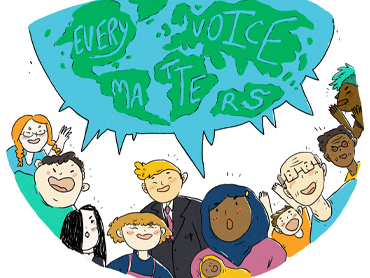School of Geography, Geology and the Environment
Annual lectures
Within the School we host annual lectures in Geography and Geology, given by distinguished speakers in their field of research. These lectures are open to all.
Bennett (Geology) Lecture
The Bennett Lecture is named after Dr FW Bennett, a local practitioner and man of standing and influence in the city of Leicester. Dr Bennett was also a keen amateur geologist, and his generosity to the University is recognised both in the naming of the Bennett Building and in this annual lecture.
The Bennett Lecture is a prestigious annual public event, given by a distinguished earth scientist on a topic of their choice. It should be of broad interest and should particularly enthuse and inspire tomorrow's scientists in studying the natural world.
The audience normally includes current staff and students, as well as members of the public.
Former Bennett lecturers have included Ron (now Lord) Oxburgh, Professor Dan McKenzie, Stephen Jay Gould, Sir Crispin Tickell, Professor Michael Russell, Professor Dr Schmid, Dr Harry Dowsett, Professor Andrew T Fisher, Professor Jenny Clack, Professor Tim Lenton, Professor Simon Wallis, and Dr Sue Loughlin.
***Lecture postponed until further notice***
A palaeontological view of the modern climate and biodiversity crisis
Professor Daniela Schmidt
Professor of Earth Sciences
School of Earth Sciences and the APVC Research Environment and Culture, University of Bristol
New date to be confirmed soon...
 The 63rd Annual Bennett Lecture at the School of Geography, Geology and the Environment will be delivered by Professor Daniela Schmidt.
The 63rd Annual Bennett Lecture at the School of Geography, Geology and the Environment will be delivered by Professor Daniela Schmidt.
The Intergovernmental Panel for Climate Change in the 6th Assessment stated that historical and palaeontological records show that climatic variability has high potential to affect biodiversity and human society and that “… global biodiversity crises [are] often triggered by rapid warming”. The biases of the fossil record and the long timescale involved raise the question what the contribution of the palaeontological record can be to answering of the impacts and risks of the climate crisis. I will draw on examples of links between environmental change and biotic response in the fossil record, highlight the power of our methodologies working with challenging records, and our experience in combining climatic and biological records.
 Daniela Schmidt is Professor in the School of Earth Sciences and the APVC Research Environment and Culture at the University of Bristol. Her work focusses on understanding vulnerability of people and nature in the context of climate change, especially in marine systems. She was coordinating lead author for the IPCC WGII chapter on Europe. Working with colleagues in the humanities, social science and law, she assesses adaptation options and aims to widen the discourse of climate change risks. She held a series of fellowships from NERC, the Royal Society and Leverhulme Trust and hosted fellows from different continents supported by a range of funders
Daniela Schmidt is Professor in the School of Earth Sciences and the APVC Research Environment and Culture at the University of Bristol. Her work focusses on understanding vulnerability of people and nature in the context of climate change, especially in marine systems. She was coordinating lead author for the IPCC WGII chapter on Europe. Working with colleagues in the humanities, social science and law, she assesses adaptation options and aims to widen the discourse of climate change risks. She held a series of fellowships from NERC, the Royal Society and Leverhulme Trust and hosted fellows from different continents supported by a range of funders